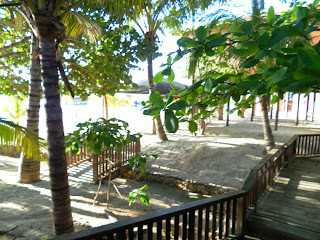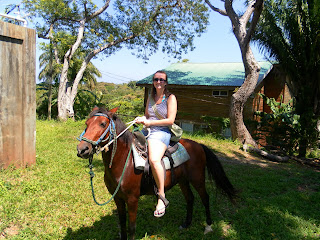 By Wednesday our doctor was sure it was appendicitis and rushed us to the hospital in Juticalpa (45 mins away) with papers for the emergency intake stating he needed surgery within a couple of hours at the latest. Unfortunately the surgeon in Juticalpa wasn´t convinced it was appendicitis and ordered more antibiotics and blood tests. Isaí spent almost 27 hours in the emergency ward waiting for his operation during which time his appendix burst. Thankfully another surgeon took pity on Isaí and rushed him to his operating room when he saw that obviously no one was attending to him. I can´t imagine what could have happened if we had waited any longer.
By Wednesday our doctor was sure it was appendicitis and rushed us to the hospital in Juticalpa (45 mins away) with papers for the emergency intake stating he needed surgery within a couple of hours at the latest. Unfortunately the surgeon in Juticalpa wasn´t convinced it was appendicitis and ordered more antibiotics and blood tests. Isaí spent almost 27 hours in the emergency ward waiting for his operation during which time his appendix burst. Thankfully another surgeon took pity on Isaí and rushed him to his operating room when he saw that obviously no one was attending to him. I can´t imagine what could have happened if we had waited any longer. The good news is after a week of really strong IV antibiotics and lots of rest Isaí was released from the hospital early so he could finally feel comfortable at home and take his medication orally. After being in such a negligent and unsanitary hospital for so long it really made me miss the privileges we enjoy in Canada. The hospitals here rarely have all the medications the doctors prescribe and it´s up to the family to purchase them at the pharmacy. The nurses don´t assist in patient care- other than administering medicines bought by the patient. And armed guards wake everyone up at 4 am to advise that the family member needs to bathe their patient before 5 am at which point all family is expelled until 10am. I don´t think I´ve ever been so frustrated in my life, not to mention angry for what could have happened if Isaí hadn´t received his operation when he did.
Thank the Lord for giving me patience during this trying time. Thanks for the healing Isaí has experienced since leaving the hospital and for all the friends and family that have visited us. We are still asking for your prayers as Isaí still hasn´t fully recovered. The last couple of days have been difficult as the fever has returned and the doctors think he may have contracted an intestinal infection or malaria- both of which are totally unrelated to the surgery. As you can imagine, Isaí is feeling a little frustrated that he´s still stuck at home in bed when he´d rather be working and doing the things he likes. We are praying for patience, wisdom, healing and a positive outcome from today´s blood tests.
In other news from Honduras, October was extremely challenging for Honduras living in the southern regions, Choluteca and Valle. They experienced a state of emergency due to torrential rain, flooding and landslides. Although the worst weather has subsided at least a dozen people have lost their lives and thousands of people are struggling to recover as their homes have been destroyed, roads are washed out and food shortages persist in the area. Local NGO´s are working hard to stabilize the situation, including CRWRC´s partner agency Harvest with the help of a generous donation from the Carpenteros and Friends (Ontario, Canada). Thank God that progress is being made to rebuild homes and roadways. Please remember the many families living in the south and pray for restoration and a sense of peace for all those affected.
I am also extremely thankful that my contract extension with CRWRC as their volunteer to Diaconía Nacional has been approved. Right now we are working on the budget and plans for next year and I am so grateful to know that God is providing this wonderful opportunity once again. It´s true that when one commits to a year-long volunteer position you never really know how you´ll feel by the end and what your plans will look like. I appreciate that God has opened this door and touched the hearts of all those involved so that we can continue serving God in this capacity for another year. I also ask for your prayers as we make these preparations and look for strategies to raise funds once again. Isaí and I feel extremely blessed to know that we have such a supportive community behind us!










































